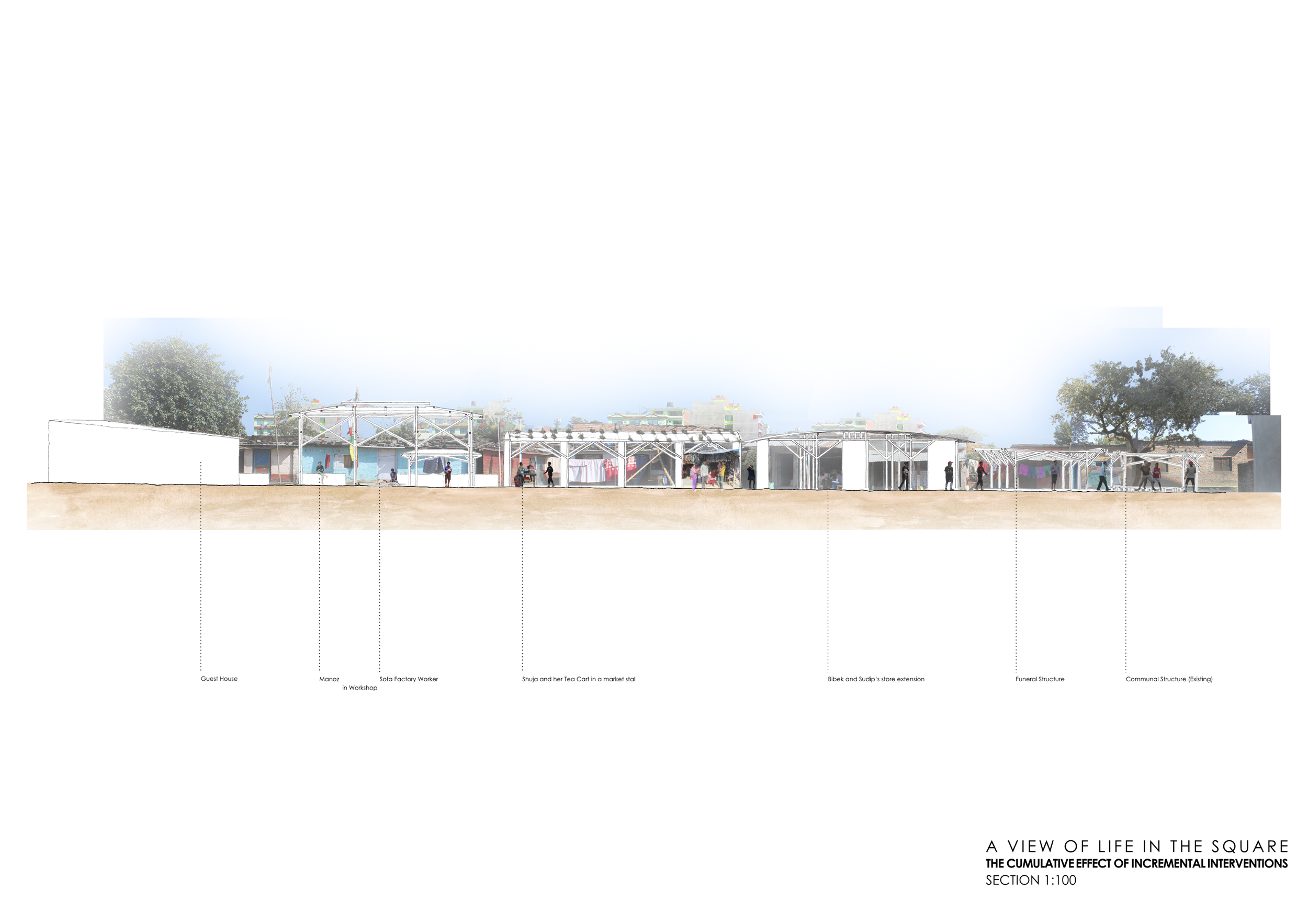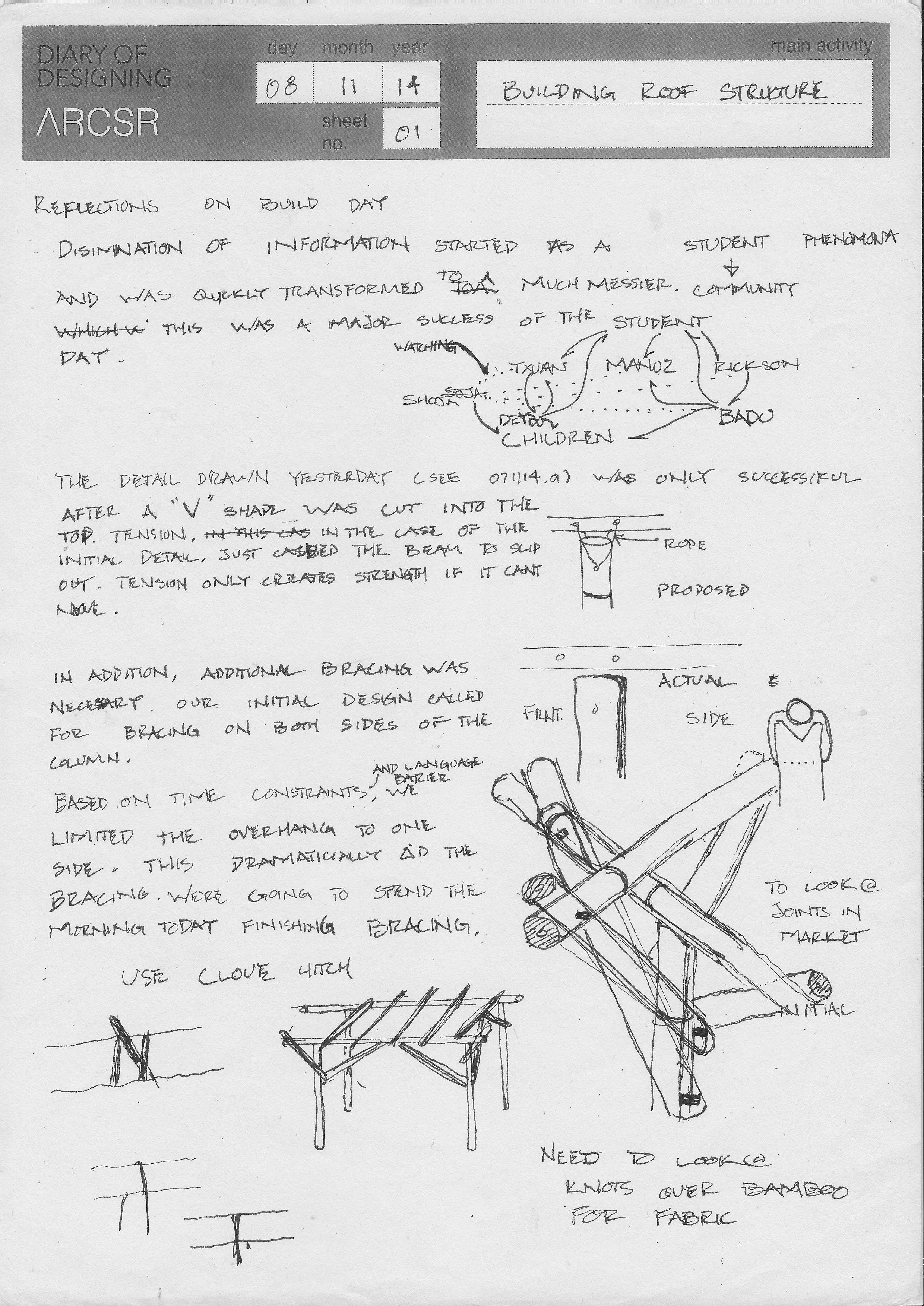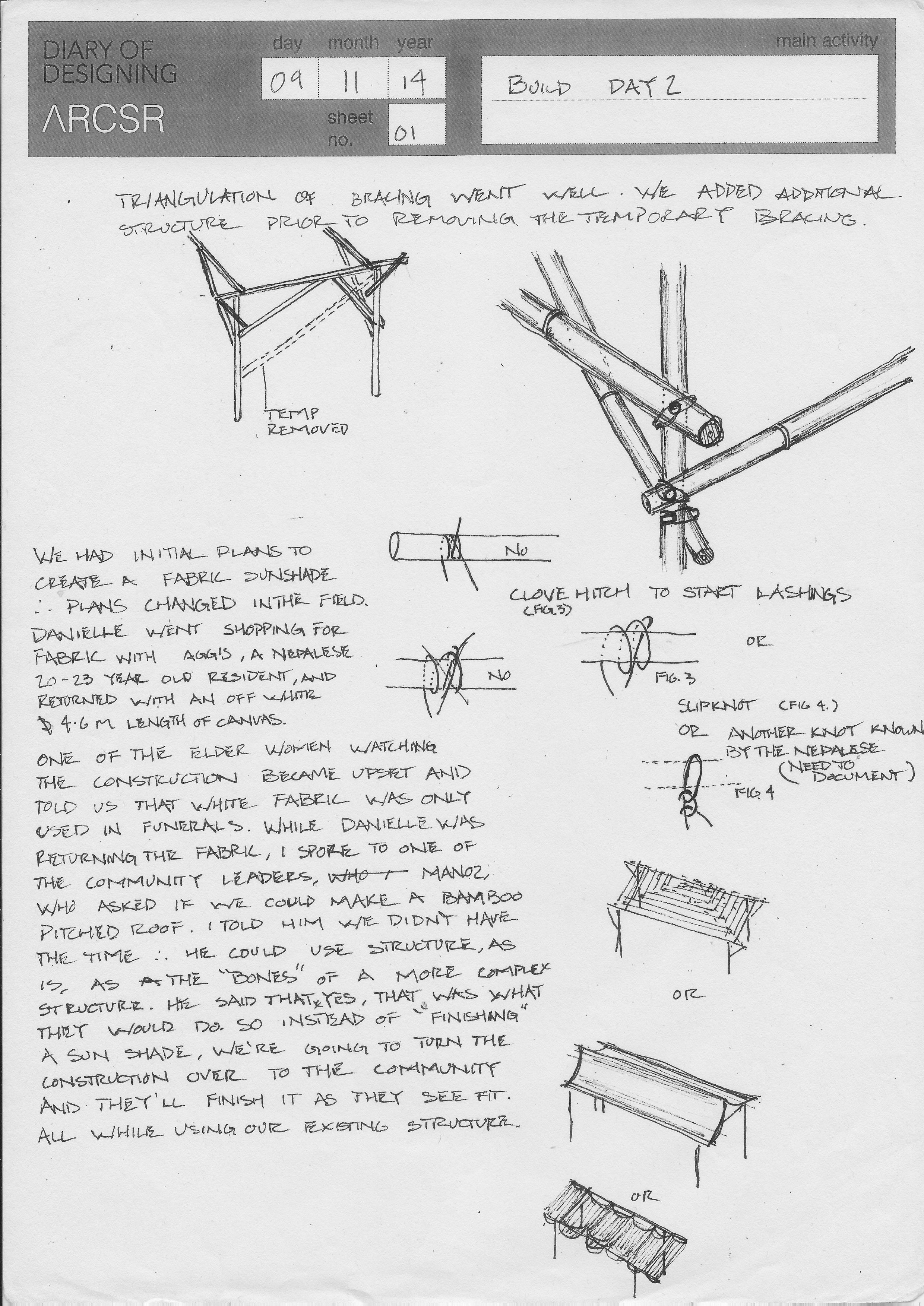
Architectural Research in Kathmandu
Sukumbasi Settlement
Starting in late September 2014, I began researching responses to urban blight in Jagriti Tole — a squatter settlement along the Bishnumati River in the north west of Kathmandu. Initial research seemed to indicate that urban blight in the Kathmandu Valley was caused by a combination of large scale projects, such as the development and implementation of master plans, and natural disasters, namely the destruction caused by annual flooding.
Instead, I found that a great many blighted sites were neglected and left vacant as a result of speculative real estate practices.
The site I chose for further study is owned by a foreign investor from India (referred to around the square as “the Indian Man”) and had sat vacant for at least 30 years. The residents in the community knew that at any point the Indian Man might return and build on the land, therefore, they’ve avoided utilizing the open space. That changed between the summer and November 2014.



When the first scoping study from ARCSR visited the site in Jagriti Tole, the square was empty. By November 2014, the community had installed four temporary bamboo benches in the south-east corner of the square. Wvhile the benches are inexpensive and rudimentary, they changed how the space was used.
Before the benches were installed, social activity only occurred along the eastern edge of the square, near the two community stores. After the benches were installed, the community started using the land. After placing seats in the south-east corner of the square, the football pitch to the west gained a spectator area, women from local houses had a place to talk during the day when some of the men were at work, and the residents would gather for a nightly bonfire in the centre of the seating area. As a cultural and skills exchange, we – a group of three students and residents from the community – built the framework for a canopy structure that further defined the seating area as a place in the square.
This architectural intervention both continued and cultivated the narrative of a temporary re-appropriation of a blighted resource (in this case, a blighted square). My research focused on ways to continue this, and similar narratives in other locations, to benefit the community.


